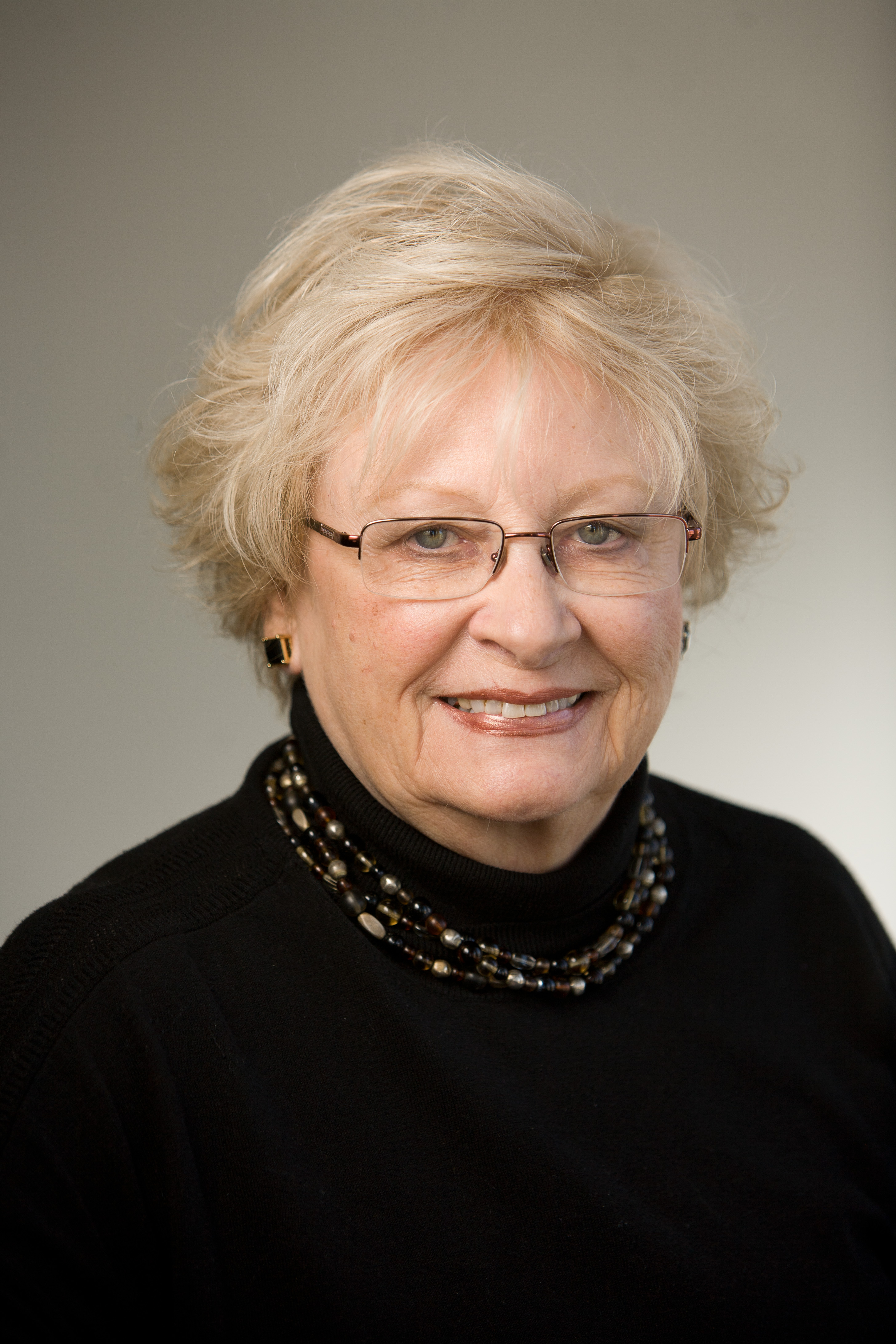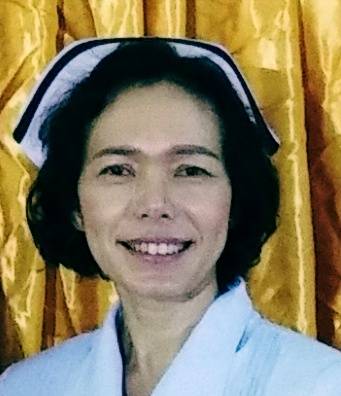Conference Schedule
Day1: July 11, 2019
Keynote Forum
Carolyn C Johnson
Director of the Tulane Prevention Research Center and Professor at Tulane University School of Public Health and Tropical Medicine, USA
Title: Movin’ for LIFE: Health Promotion in an Underserved Primarily African American Community

TBA
Biography
Carolyn Johnson completed her Ph.D. from the University of New Orleans, Louisiana, USA. She is an endowed professor at the Tulane School of Public Health and Tropical Medicine, New Orleans, Louisiana, USA. She is the Director of the Tulane Prevention Research Center, Director of the Center of Excellence in Maternal and Child Health (MCH), and Head of the academic section in MCH. She has published more than 100 peer-reviewed papers in public health, nutrition, and behavioral journals, and serves on the editorial boards of at least five major journals.
Abstract
Community-based health promotion is a desirable public health action, especially in underserved minority areas. Community-wide interventions, however, can be difficult and expensive. The Movin’ for LIFE health promotion was a major research activity of the Tulane Prevention Research Center funded by the Centers for Disease Control and Prevention (CDC). Methods included: a coalition of community residents, an extensive social marketing campaign, use of community health workers and program champions, community-based cooking classes, family fun, and health fair, a community-partnered 5K, and community-organized walking, dancing and yoga. Attendance data indicated that activities were well attended and well received. Outcome data are community-based, rather than individual, and consist of observations of community residents who are outside and physically active at parks and playgrounds as well as on streets and sidewalks. Additional observations at food stores are expected to show improved food offerings. Preliminary outcome data will be presented. Sustainability and dissemination are integral components of health promotion and these activities are currently underway and ongoing. Experience has shown that events need to be well received and “owned” by the community for sustainability to occur.
Note: 3 Keynote slots, 8 Speakers slots and 20 Delegate slots available
Azadeh Stark
Senior Scientist, Henry Ford Health System, Michigan, USA
Title: Title: Racial Disparity in Breast Cancer Treatment Outcome: The Potential Influence of Biological Differences Between African-American and White-American Women

TBA
Biography
Azadeh Stark is a cancer and molecular epidemiologist and holds the position of senior scientist at the Department of Pathology at Henry Ford Health System, Professor-in-Practice at the School of Interdisciplinary Studies at the University of Texas at Dallas and Visiting Research Professor at the School of Nursing, Chiang Mai International University in Thailand. She has authored and co-authored more than 35 peer-reviewed manuscripts and three book chapters. Dr. Stark believes the best science and the most effective population health interventions result from constructive interdisciplinary collaboration. She has been an active participants in various community health improvement projects.
Abstract
Breast cancer (BC) mortality is 45% higher in African-American (AAm) than WhiteAmerican (WAm) women, despite comparable incidence rates. The scientific premise of our work has been that this higher mortality is due to biological differences between AAms and WAms. Initially, we reported that HER2+ was associated with advanced stages and poorly differentiated BC only among WAs. In the follow-up cohort study of 1,263 women, members were categorized into four BC subtype groups, Luminal A, Luminal B, EGFR2+/ER- and triple negative (TNBC). Prevalence of TNBC was higher among premenopausal (32.7%) and post-menopausal (21.8%) AAms, than premenopausal (21.5%) and postmenopausal (12.4%) WAms. African heritage was an independent risk for TNBC (OR= 1.72, 95% CI 1.17- 2.54, P=.006). We compared risk of recurrence after diagnosis of DCIS between AAs and WAs. AAms had an 8-year cumulative risk of recurrence (HR= 3.96, 95% CI 1.42-11.04). Finally, we assembled a cohort of 2,588 AAms and 3,566 WAms diagnosed with their first benign breast conditions. Members of the cohort were followed-up until the diagnosis of BC, death or departure from the healthcare system. 103 (4.1%) of AAms and 143 (4.0%) of WAms were diagnosed with subsequent BC. The 10-year risk for developing TNBC was 0.56% (95%CI,0.32%-1.0%) for AAms and 0.25% (95%CI, 0.12%-0.53%) for WAms. Among the 66 AAms who developed invasive BC, 16 (24.2%) developed TNBC compared with 7 (7.4%) of the 94 WAms (P=.01). Our findings portend that African heritage is a risk factor for TNBC and a potential contributor to disparity in BC treatment outcomes.
Note: 3 Keynote slots, 8 Speakers slots and 20 Delegate slots available
Emily Schulz
Assistant Clinical Professor, Northern Arizona University, USA
Title: Health Promotion, Stress Management and Wellbeing From the Purna Health Management System: A Case Study

TBA
Biography
Emily Schulz has completed her two PhDs (occupational therapy and family studies) from Texas Woman’s University. She is Assistant Clinical Professor at Northern Arizona University where she teaches occupational therapy doctoral students about community-based needs assessment, program development and evaluation, and quantitative research methods. She has published more than 20 papers in peer-reviewed journals with a focus on spirituality and health, and has been serving as an editorial board member of many peer-reviewed journals.
Abstract
The Purna Health Management System (PHMS) is an integrated holistic system for health management, based on perennial, ancient Vedic philosophy, and developed by Professor, Dr. Sri Svami Purna Maharaj, with the idea to have a meaningful framework in preventive health routine or practice that becomes part of one’s way of life. The PHMS has four key factors: health, fitness and nutrition; life balance (stress management); spiritual growth and development; and living in harmony with the natural environment. This study used an anonymous online survey to determine which aspects of the PHMS participants perceived as fostering their physical health, mental/emotional health, ability to manage stress, and wellbeing. Spearman’s ρ Correlation Coefficients were used to test hypotheses for relationships between a number of recommended activities, and frequency of implementation of the four key factors of the PHMS and outcomes of physical health, mental/emotional health, overall stress level, ability to manage stress, and perceived well-being. Of 100 possible participants, 41 completed the survey. Participants who reported frequently implementing the PHMS reported positive outcomes in physical health, mental/emotional health, ability to manage stress, and overall stress. Participants who reported implementing more recommended activities reported increased wellbeing from the key factors of life balance (stress management) and spiritual growth and development. These findings suggest that the PHMS may be supportive of the health and wellbeing in those who implement it, especially when used regularly and consistently. Additional research is needed to ascertain how the PHMS can be used to promote health, wellbeing, and manage stress.
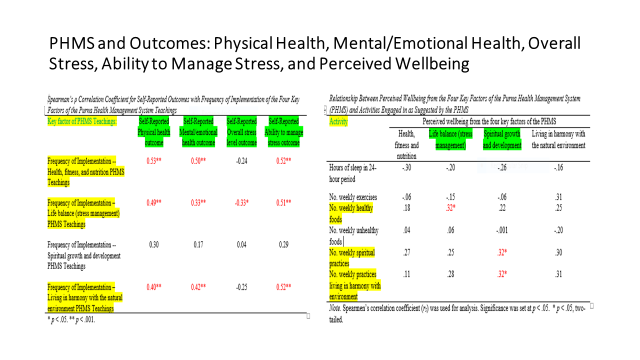
Ipseeta Menon
Professor, Dept of Public Health Dentistry, ITS Dental College, India
Title: CURIOSITY KILLS THE CRAVING – SUCCESSFUL ATTRIBUTES FOR TOBACCO CESSATION

TBA
Biography
Dr Ipseeta Menon, is presently working as Professor, Dept of Public Health Dentistry, in ITS Dental College, Ghaziabad. She has attended and presented papers in many National and International Conferences. She has authored books in her specialty. She has many National and International publications to her credit. She is in the editorial board for many National Journals, and reviewer for reputed International Journals. She has won many laurels in the field of Public Health Dentistry. She was awarded the Excellence in PUBLIC HEALTH DENTISTRY AWARD - Indian Health Professional Award in 2017.
Abstract
Today’s generations should be made responsible in understanding the devastating nature of tobacco consumption amounting to severe health, social, environmental and economic disaster to one’s self and his country. Tobacco products cause incredible addictiveness to their consumers and hence require constant support from health care providers to help them quit the same. Tobacco Cessation is the only intervention method which has the potential to reduce tobacco-related morbidity and mortality in the short- and medium-term. Tobacco Cessation has a range of techniques including motivation, advice and guidance, counseling, telephone and internet support and appropriate pharmaceutical aids. Given the high prevalence of tobacco use, even small steps towards tobacco cessation have the potential to produce major health benefits. As tobacco consumption is a chronic addiction, repeated reinforcements, opportunity-based interventions are most effective in addressing physical dependence and modifying deeply ingrained patterns of beliefs and behavioral related issues. In 2003, the Centers for Disease Control and Prevention (CDC) found from self-reports that 41% of current smokers (20.2 million) had tried to quit smoking for 1 or more days within the previous 12 months. Unfortunately, most smokers are not successful in quitting, primarily because they are addicted to nicotine. Cognitive behavioral methods are the benchmark for counseling programs and can be offered by trained counselors, psychologists, or clinicians. Curiosity is associated with various forms of tobacco advertising. Curiosity can act as an early warning signal for potential future tobacco users and limit exposure to tobacco among potential users.
Note: 3 Keynote slots, 8 Speakers slots and 20 Delegate slots available
Tracks
- Hospital Medicine
- Nutrition
- Vaccines
- Cardiology
- Public Health
- Behavioral Health
- Psychology and Psychiatric Disorders
- Family Medicine
- Occupational Health
- Diabetes
- Chronic Diseases
- Internal Medicine
Location: Vienna, Austria
Michael Koethner
Bespoke Network - Beijing, China
Title: The Awakening of One-Self within the Wellness Movement (Communication, Progress, Self- Reflection, Honesty- Sustainability).
TBA
Biography
Michael holds various Diplomas in Manual Therapy from the Australian College of Natural Therapy in Sydney. He also has various other forms of education in the field of Energy Healing and from within other industries. He currently works in China and has his own company providing consulting services to interested clients, who are brave enough to explore the hidden gems of the Alternative and Complementary Industry. He also works with some Investment companies internationally who are searching for high-value Investment options in the field of Preventive and Community Health and Well-Being.
Abstract
Abstract of a “Conversation” about the profound need for much deeper and meaningful dialogues, on all aspects life has to offer in this 3D realm. Much has been written and talked about but there is a never-ending resurgence of previously suppressed and repressed issues that affect our daily lives in a very negative manner. Forget about numbers for a few minutes and allow your heart to listen to your soul and use your ego as it was meant to be used for – as a CPU to coordinate DI / DO (Data-In / Data-Out) and distribute it accordingly as well as organise the flow in a manner that is beneficial for the system to benefit from and grow. There is a much higher demand to the existence and experience of life than the boring monotonous performance and movements. I like to start with a statement made by Alex Collier in the 90’s and it has been given to humanity through the higher channels. Please reflect on these words for a moment before you continue with your life: “Purpose of Human Life => Profound Self-Determination and Responsible Freedom. Be truly and deeply SelfConfident and Free. To unconditionally be Responsible for Oneself – without being Coerced to accept some Higher Authority”. Allow your Self to dwell on that statement for a while and feel its impact. It will eventually and radically change the perception of our lives; this change and growth cannot be stopped. How does the business community adapt and cater for this change in our perception; as the old and tried way of providing therapy and treatments, as well as customer service is no longer sufficient enough to justify the ever increasing and deep rooted need to excel in one’s growth.


Note: 3 Keynote slots, 8 Speakers slots and 20 Delegate slots available
Location: Vienna, Austria
Tamara Darsania
Tbilisi State Medical University, Georgia
Title: Emotional, external and restrained eating behavior in Georgia and Features of Eating Behavior

TBA
Biography
41 years old, graduated from Tbilisi State Medical University (TSMU) faculty of Preventive Medicine, TSMU Nutrition and age medicine unit doctoral. 2003-2008yy worked in Georgian Research Institute of Hygiene and Sanitation, as a junior researcher. She’s publications in reputed journals: 20 papers and 2 Monographs. She’s participated in 22 International scientific conferences. Not married.
Abstract
Food is used not only the remedy to satisfy hunger, but it becomes the way of getting rid of existed problems. The goal of our research was to study spreading of emotional, external and restrained eating behavior among the population of Georgia and accordingly, introduction of new methods of fighting against obesity and overweigh in Georgia. The appropriate study has been conducted within Georgia. Data on demographic information, nutritional habits, 72-h dietary recalls, modified ADP questionaire, and anthropometric measurements were collected through face-to-face interviews. Emotional, external and restrained eating behavior was observed in 40.5% of respondents. Besides demographic, social-economical and professional factors, meal macrostructure also are influenced by nutritional priorities, psychological changes of eating behavior and the features of medical-biological state. For the purpose of changing eating behavior among the persons with eating behavior disorders it is necessary to open preventive regional centers, offices and cabinets in the medical institutions. In relation to the problem is recommended invitation of the specialists of public healthcare organization to conduct group rational psychotherapy in order to get better acknowledged with the problem and to establish their active positive socially significant motivation.
Location: Vienna, Austria
SERGEY SUCHKOV
Director First Moscow State Medical University, Russia
Title: Antibody-Proteases as a Novel Biomarker and a Unique Target to Secure Predictive, Diagnostic and Preventive Manipulations in Autoimmunity Conditions

TBA
Biography
Sergey Suchkov graduated from Astrakhan State Medical University and awarded with MD, then in 1985 maintained his PhD at the I.M. Sechenov Moscow Medical Academy and in 2001, maintained his Doctorship Degree at the Nat Inst of Immunology, Russia. From 1987 through 1989, he was a senior Researcher, Koltzov Inst of Developmental Biology. From 1989 through 1995, he was a Head of the Lab of Clinical Immunology, Helmholtz Eye Research Institute in Moscow. From 1995 through 2004, a Chair of the Dept for Clinical Immunology, Moscow Clinical Research Institute (MONIKI. Dr Suchkov has been trained at: NIH; Wills Eye Hospital, PA, USA; Univ of Florida in Gainesville; UCSF, S-F, CA, USA; Johns Hopkins University, Baltimore, MD, USA. He was an Exe Secretary-in-Chief of the Editorial Board, Biomedical Science, an international journal published jointly by the USSR Academy of Sciences and the Royal Society of Chemistry, UK. At present, Dr Sergey Suchkov is a Chair, Dept for Personalized and Translational Medicine, I.M.Sechenov First Moscow State Medical University. He is a member of the: New York Academy of Sciences, USA; American Chemical Society (ACS), USA; American Heart Association (AHA), USA; EPMA (European Association for Predictive, Preventive and Personalized Medicine), Brussels, EU; ARVO (American Association for Research in Vision and Ophthalmology); ISER (International Society for Eye Research); PMC (Personalized Medicine Coalition), Washington, USA.
Abstract
Catalytic Abs (catAbs) are multivalent immunoglobulins (Igs) with a capacity to hydrolyze the antigenic (Ag) substrate. In this sense, proteolytic Abs (Ab-proteases) represent Abs to provide proteolytic effects.
Abs against myelin basic protein/MBP with proteolytic activity exhibiting sequence-specific cleavage of MBP are of great value to monitor demyelination whilst in MS. The activity of Ab-proteases was first registered at the subclinical stages 1-2 years prior to the clinical illness. And the activity of the Ab-proteases revealed significant correlation with scales of demyelination and the disability of the patients as well. So, the activity of Ab-proteases and its dynamics tested would confirm a high subclinical and predictive (translational) value of the tools as applicable for personalized monitoring protocols.
Of tremendous value are Ab-proteases directly affecting remodeling of tissues with multilevel architectonics (for instance, myelin). By changing sequence specificity one may reach reduction of a density of the negative proteolytic effects within the myelin sheath and thus minimizing scales of demyelination. Ab-proteases can be programmed and re-programmed to suit the needs of the body metabolism or could be designed for the development of new catalysts with no natural counterparts. Further studies are needed to secure artificial or edited Ab-proteases as translational tools of the newest generation to diagnose, to monitor, to control and to treat and rehabilitate MS patients at clinical stages and to prevent the disorder at subclinical stages in persons-at-risks to secure the efficacy of regenerative manipulations.
Note: 3 Keynote slots, 8 Speakers slots and 20 Delegate slots available
Location: Vienna, Austria
Sultan Abdullah Alharthi
Saudi Commission for Health Specialties, Saudi Arabia
Title: Assessment of health accreditation on health care from patient and healthcare provider experience in Makkah region 2017
TBA
Biography
Sultan Alharthi has completed his MBBS from King Saud University. He is family medicine resident at the Suadi Board of Family Medicine in Taif, Saudi Arabia.
Abstract
Background: A responsive and comprehensive primary healthcare (PHC) system leads to a more efficient health system, lower rates of hospitalization, fewer health inequalities, better health outcomes, and lower costs. Despite its routine use in the work course of most hospitals worldwide, accreditation has only recently has been introduced into the PHC setting in Saudi Arabia.
Objectives: To assess the impact of accreditation on quality of care as perceived by patients and PHC staff members as well as to compare the quality of healthcare services provided by accredited and non-accredited primary healthcare centers.
Subjects and methods: A cross-sectional study was conducted at two primary health care (PHC) centers that pass accreditation on CBAHI and two non-accredited PHC centers, in Makkah region, Saudi Arabia. The study population consists of patients attending PHC centers and staff working in the selected PHC centers. Two pre-designed self-administered questionnaires were used for both patients and healthcare providers
Results: The study included 770 patients recruited from 4 primary healthcare centers (two in Makkah and two in Taif cities) and 47 primary healthcare staff members working in the same centers. Patients attended accredited PHC center were more significantly satisfied with its services compared to those attended non-accredited center. Regarding screening services, lipid panel, fasting plasma glucose, and HBA1c screening were more significantly performed in accredited PHC centers than non-accredited centers. Regarding the surveyed scales of the impact of accreditation of primary healthcare centers, from staff`s perspectives, the mean scores computed for the scales and subscales were all high.
Location: Vienna, Austria
Mahera Abdulrahman
Dubai Health Authority, Dubai, United Arab Emirates
Title: Colorectal Cancer risk awareness and screening uptake among adults in the United Arab Emirates

TBA
Biography
Dr Mahera previously held several positions at the Dubai Health Authority (DHA), most recently as head of Research Section within the DHA. She has also acted as an head of research support unit, and chair of metabolic genetics lab. Dr Mahera has also played an important role in leading several research projects within DHA, mainly focused on Genetic studies on UAE population and medical education. In addition, she actively established links between DHA and other organizations both nationally and internationally. In addition to her extensive professional career, Dr Mahera is a dedicated academic and has initiated the “Residency Research Program” in DHA since 2011. Dr Mahera is regularly invited to lecture at prestigious institutions, and to speak at various medical conferences. Her work has also been published in international journals, and presented at several conferences. Dr Mahera obtained her Medical degree and then her Master in Molecular pathology from Kuwait University in 2003 and earned her Doctor of Philosophy in Clinical Genetics at UK in 2007. Dr Mahera was recognized with the Best Research Award by the prestigious Sheikh Sultan Bin Khalifa Award on 2013 for Excellence for Distinguished research on genetics.
Abstract
United Arab Emirates initiated the colorectal cancer (CRC) screening on 2013. Yet, one of the barriers to participation in CRC screening is lack of knowledge about the importance of CRC, its risk factors, and the benefits that could be gained through screening. We aimed in this study to identify knowledge, attitude, and behavioral factors among the public that are associated with willingness to undergo CRC screening. A structured bilingual questionnaire in English and Arabic was designed by a multidisciplinary team and through a review of the literature. The survey consisted of four functional domains: socio-demographic characteristics, knowledge, attitude, and practice related questions. It was encouraging that more than 65% of the total participants surveyed for the study were aware of CRC and their main source of information was media (395, 66%). However, the majority (379, 64%) were thinking that CRC is not common, and did not hear of the screening test for CRC (401, 67%). An overall evaluation of the answers revealed a poor level of knowledge on risk factors of CRC, and only 40% correctly identified fecal occult blood as main test for CRC prevention. Surprisingly, 95% of participants mentioned that the CRC screening was not recommended to them by a physician. This is the first report analyzing the awareness, attitude and practice of UAE population and assessing the barriers for CRC screening. Our results demonstrate that better education and communication of the benefits of early detection of CRC should be addressed to improve the screening in UAE population. There is need for campaigns and educational programs, both for health care providers and public. Media might play a significant role in this aspect and new policies need to focus more on increasing community awareness on cancer preventive measures in UAE.
Table 1. Variation in selected knowledge, attitudinal, and practice variables according to sociodemographic characteristics among adults in UAE (n=600).
|
Variable |
In your opinion, is colorectal cancer treatable if detected early |
|||||
|
|
|
|
|
|
|
|
|
|
|
n (%) |
|
|
P Value |
|
|
|
|
|
|
|
||
|
Education level |
Yes |
|
No |
|
||
|
|
|
|
|
|
|
|
|
Illiterate/primary school |
12 |
(2) |
|
4 |
(6) |
0.0001 |
|
High school |
133 |
(22) |
|
24 |
(39) |
|
|
University |
351 |
(59) |
|
27 |
(44) |
|
|
Postgraduate |
103 |
(17) |
|
7 (11) |
|
|
|
|
|
|
|
|||
|
|
If advised by your doctor, would you get screened for Colorectal Cancer |
|||||
|
|
|
|
|
|
|
|
|
Education level |
Yes |
|
No |
|
||
|
|
|
|
|
|
|
|
|
Illiterate/primary school |
10 |
(2) |
|
2 |
(3) |
0.01 |
|
High school |
104 |
(20) |
|
28 |
(37) |
|
|
University |
315 |
(61) |
|
33 |
(44) |
|
|
Postgraduate |
91 (18) |
|
12 |
(16) |
|
|
|
|
|
|
|
|
||
|
Occupation |
Yes |
|
No |
|
||
|
|
|
|
|
|
|
|
|
Student |
77 (15) |
|
9 (12) |
0.03 |
||
|
Housewife |
31 |
(6) |
|
4 |
(5) |
|
|
Business owner |
12 |
(2) |
|
|
0 |
|
|
Managerial or professional |
243 |
(47) |
|
27 |
(36) |
|
|
Intermediate occupation |
128 |
(25) |
|
21 |
(28) |
|
|
Lower supervisory/technical |
10 |
(2) |
|
11 |
(15) |
|
|
Semi-routine occupation |
17 |
(3) |
|
2 |
(3) |
|
|
|
|
|
|
|
|
|
*p < 0.05, significance determined using Montecarlo 2 tailed significance at 95% CI. Only significant results are presented.
Location: Vienna, Austria
Ananya Manit
King Narai Hospital, Lop Buri, Thailand
Title: Quality of Life in Patients with Chronic diseases at Contracting Unit of Mueang Lop Buri, Thailand

TBA
Biography
Dr. Ananya Manit has completed PhD from College of Public Health Sciences, Chulalongkorn University, Thailand. She is the Head of the department of medicine ward, and research and nursing development, King Narai Hospital, Lop Buri, Thailand. Furthermore, I work as system manager of non-communicable disease in Mueang Lop Buri contracting unit of primary care, and NCD committee of Lopburi Provincial Public Health Office, and 4 nd health region.
Abstract
Patients with Chronic diseases have increased in Contracting Unit of Mueang Lop Buri, and most of them are uncontrolled their diseases, therefore, they may be occurred complications such as diabetic retinopathy, foot, chronic kidney disease, and cerebrovascular diseases. A quality of life assessment is of great importance for patients with chronic diseases, because problems caused by specific diseases impact specific areas of their lives. This descriptive research is to study quality of life of patients with chronic diseases (Diabetes, Hypertension, Stroke, and Coronary artrey diseases).
METHODS: The WHOQOL-BREF-THAI instrument is the 26- item abbreviated version of the WHOQOL instrument including 24 items for four domains (physical, psychological, social, and environmental) was implemented to evaluate quality of life of 130 patients with chronic diseases by using random sampling. A statistical data analysis was performed by using descriptive statistics.
RESULTS: The results show that the environmental, and psychological domain were good level (Mean=32.19, S.D=4.09, and Mean=25.23, SD=3.40, respectively), then the physical, and social domain were moderate level (Mean=25.31, S.D=2.80, and Mean=11.48, SD=1.27, respectively). CONCLUSION: All therapeutic and nursing interventions that can contribute to improving quality of life in moderate level domains should be utilized.
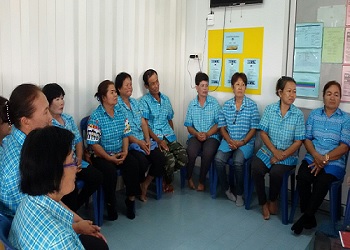
Note: 3 Keynote slots, 8 Speakers slots and 20 Delegate slots available
Location: Vienna, Austria
TBA
Biography
Tsabang Biography Nolé has completed his PhD at the age of 48 years from Yaounde 1 University. Author of 63 articles and principal investigator of 4 books published by Heifer International Project Cameroon, he has higher education experience in teaching and consulting. Besides Biodiversity and ethnopharmacological research, Dr Tsabang Nolé teaches the following undergraduate and graduate courses: Ecophysiology, Sustainable development, Ethnobotany and socio-economic aspects of Agroforestory, Ethnobotany and environmental health, Environmental health and ecosystems dynamics, Biodiversity and Natural Resources management, Ecosystems Dynamics and Carbon stock evaluation, Ethnopharmacology, and Traditional medicine, as visiting lecturer at the Faculty of Medicine and Biomedical Science, at the University of Dschang and at the Higher Institute of Environmental Sciences.
Abstract
The products of local therapists have a very short time of conservation. They are generally prepared for immediate consumption, especially for macerations, infusions and decoctions formulation products, which become unfit for human consumption after five to seven days of conservation. This study aims to evaluate a new approach for the development of an improved traditional medicine (ITM) used to prepare an oral hyperglycemic herbal medicine based on Laportea ovalifolia. The parameters of ethno pharmacological evaluation are: the derived product is unchangeable in task, color and odor, no oxidation which produces a solid deposit at the bottom of the bottle, and a deposit of foam at the top, vaporization which produced the diminution of the product inside the bottle, and finally the duration of conservation. To achieve this objective, we have regularly compared the improved traditional medicine (ITM) with local therapist’s preparation based on Laportea ovalifolia. Four galenic forms of hypoglycemic improved traditional medicine were produced. From October 2007 date of their preparation to 2018 they still undamaged, when well conserved (Fig 1). While most traditional or herbal medicines become oxidized and decompose after 5 to 7 days of their preparation. A relationship between these four formulations was described as follow: One spoon of oral suspension (10 ml) = one sachet of powder=2 tablets=3 capsules. Hence, our research provides new insight into a drug discovery approach that could alleviate the major problems affecting traditional medicine and enhance its effectiveness in addressing health care in developing countries.
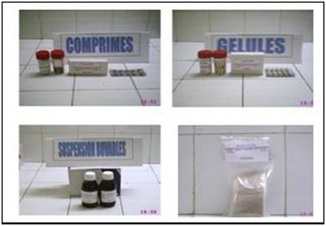
Fig. 1: Four forms of improved traditional herbal antihyperglycemic medicine
Location: Vienna, Austria
Wafa Zehra Jamal
Community Health Solutions, Pakistan
Title: Silver Modified Atraumatic Restorative Technique (SMART) - Medical Intervention of Caries: Preventive Strategies in Pediatric Dentistry & Public Health

TBA
Biography
Dr Wafa Zehra is a bachelor in dental surgery from Pakistan’s reputable university, Dow University of Health Sciences (DUHS) - DIKIOHS. She is very ambitious and started her journey as a private dental practitioner soon after graduation in 2013. During her stay in Hong Kong she realized the need and importance of research after attending CME sessions from Hong Kong University. Currently she is part of a famous organization “Community Health Solutions” as a research associate to learn and contribute to the community at large. She is also a part time private dental practitioner.
Abstract
Early childhood caries is globally prevalent among children and remains a challenging issue worldwide. Generally, caries significantly affects the health and quality of life. Due to uncooperative behavior, traditional restorative treatment in children often requires advanced treatment modalities and sometimes costly hospitalization. Incorporating preventive strategies along with atraumatic restorative treatment(ART) approach can be useful not only for children but also elderly, special needs and phobic patients and specially in developing countries where skilled human and other resources are limited and conventional treatment is unaffordable.
The use of silver nitrate for management of dental caries dates back to early 1900s based on the infectious nature of dental caries and the disinfectant character of silver nitrate. Silver diamine fluoride(SDF) is formed when ammonia and fluoride is added to silver nitrate for stability and effectiveness as an antibacterial for application to carious lesions. FDA approved it as a desensitizing agent in 2014.
The disadvantage of aesthetic concern can be far out weighted by benefits such as ease of use, noninvasive and painless procedure and low cost.
Silver modified atraumatic restorative technique(SMART) is when SDF is first applied to prevent or arrest caries and GIC filling is then used in deep cavities. SMART restoration ensures that bacteria is killed and the cavity sealed, preserving tooth structure and pulp vitality. Application of SDF alone can be a preventive measure in susceptible patients. This can be used as first line medical defense against caries and implementing this strategy can benefit not only children but the society as a whole.
Note: 3 Keynote slots, 8 Speakers slots and 20 Delegate slots available
Location: Vienna, Austria
Hala Khalil
King Faisal Specialist Hospital and Research Centre, Saudi Arabia
Title: Predictors of Self-Reported Quality of Life in Patients with Seizure Disorders – A Cross-sectional Study in Saudi Arabia Using the Biopsychosocial Model of Disease

TBA
Biography
Hala Khalil holds a doctoral degree from School of Public Health, Physiotherapy and Sport Sciences, UCD, Ireland in the field of public health. She also obtained a master degree in biology from McGill University, Canada. She has been working as a researcher at the department of Biostatistics, Epidemiology, and Scientific Computing (BESC); at King Faisal Specialist Hospital and Research Centre (KFSH&RC). In the course of her career she has successfully published and co-authored a number of research papers and presented her work as oral and poster presentations in various national and international conferences.
Abstract
Introduction
People with epilepsy are at increased risk of poor mental health and reduced quality of life (QoL). This study aimed to investigate the components of the biopsychosocial model as predictors of self-reported QoL in Saudi Arabian patients with seizure disorders.
Methods
Questionnaires were administered by interview to adult patients attending neurology outpatient clinics at KFSHRC-Riyadh between January and October 2018. Age, gender, seizure characteristics, socioeconomic indicators, and self-reported physical and mental health were investigated as predictors of self-reported QoL. Multiple logistic regression analysis was used to account for confounders.
Results
A total of 396 patients were included in the study. Unemployed persons were significantly less likely to report good QoL compared to employed persons (OR=0.6, 95%CI 0.4-0.9 p=0.03). Women receiving welfare were less likely to report good QoL (OR=0.36, 95%CI 0.2-0.7 p<0.001), and married men were more likely to have good QoL (OR=4.2, 95%CI 1.7-10.4 p<0.001).
Good physical health (OR=2.6, 95%CI 1.7-4.0 p<0.001) and good mental health (OR=3.7, 95%CI 2.4-5.6 p<0.001) were associated with higher odds of QoL. In adjusted models, self-reported good mental health remained a significant predictor in both men (OR=6.5, 95%CI 2.7-15.5 p<0.001) and women (OR=2.5, 95%CI 1.1-5.8 p=0.03), while physical health was no longer significant. Seizure in the last three months and type of seizure were similarly unrelated to QoL.
Conclusion
In patients with seizure disorders, social and psychological factors appear to have a greater relationship to quality of life compared to disease activity. Efforts should be directed towards improving social and mental health supports.
Location: Vienna, Austria
Hakam Hasan Alkhateeb
Yarmouk University, Irbid, Jordan
Title: Eugenol Ameliorates Palmitate-Induced Insulin Resistance By Partially Up-Regulating GLUT4 Translocation Via AMPK Signaling Pathway

TBA
Biography
I did my PhD work at the University of Waterloo with Dr. Arend Bonen, who inspired me in the vast interface of how muscle utilizes substrates, more specifically the utilization of glucose and free fatty acids in health and diseases. My interests in muscle physiology and metabolism was further strengthened and evolved through my postdoctoral experiences at the University of Guelph, eventually focusing on using alternative strategies and approaches that regulate of carbohydrate and fat, and apply this knowledge to the study of various diseases like diabetes, cardiovascular disease and obesity.
Abstract
Eugenol, a polyphenolic compound present in many plant essential oils, is thought to have antidiabetic properties. However, the mechanisms underlying these effects are not fully understood. Therefore, in the present study, we examined the mechanisms by which Eugenol might ameliorate palmitate-induced insulin resistance in skeletal muscle. Soleus muscles were incubated for 12 h without or with palmitate (2 mM). Eugenol (100µM), in the presence of palmitate, was provided in the last 6 h of incubation. Insulin-stimulated glucose transport, plasmalemmal glucose transporter 4 (GLUT4), Akt substrate 160 (AS160) and AMP-activated protein kinase (AMPK) phosphorylations were examined at 12 h. Palmitate treatment for 12 h reduced insulin-stimulated glucose transport, GLUT4 translocation, and AS160 phosphorylation, but it has no effect on AMPK phosphorylation. Eugenol (6–12 h) fully rescued insulin-stimulated glucose transport, although Eugenol partially restored GLUT4 translocation, it fully rescued AS160 phosphorylation. Eugenol also increased AMPK phosphorylation. The restorative effects of Eugenol on insulin-stimulated glucose transportation, GLUT4 translocation and AS160 phosphorylation were not observed after the inhibition of AMPK with compound C (50 µM). Together, these findings indicate that Eugenol ameliorates palmitate-induced insulin resistance by activating AMPK/AS160 pathway involving partial restoration of GLUT4 translocation in skeletal muscle.
Note: 3 Keynote slots, 8 Speakers slots and 20 Delegate slots available
Location: Vienna, Austria
Osama Abdelaziz Fakher
Faculty of Medicine, Al-Azhar University, Egypt
Title: Study Of Comprehensive Geriatric Care In Sharkia Governorate, Egypt

TBA
Biography
Osama Abdelaziz Fakher is from Department of Community Medicine and Industrial Medicine, Faculty of Medicine, Al-Azhar University, Egypt.
Abstract
Background: In recent years, there has been a sharp increase in the number of older persons all over the world. The number of people aged 60 years and over is expected to increase to 2 billion by the year 2050.One of the greatest challenges in geriatrics is the provision of optimal comprehensive geriatric care for older adults. Family physicians can improve the early identification of specific problems that are common in the elderly and also shift their focus from disease specific intervention to preventive care.
Objectives: To improve the health of geriatrics through identifying health problems among the studied geriatric population in Sharkia governorate and determining the level of the family physicians' knowledge and practice of comprehensive geriatric care in Sharkia governorate.
Subjects and methods: A cross-sectional study was conducted, it was conducted in 9 accredited family health centers in Sharkia governorate for one year. The family health centers were selected by stratified random sampling technique from health centers of Sharkia governorate. The sample included 630 elderly person and 52 family physicians.
Results: The results of this study declared that the most prevalent self-reported morbidities were, diabetes mellitus (36.7%), hypertension (33.5%) and respiratory disease (20.2%).The results also showed that (76.9%) of the studied family physicians have adequate knowledge about physical problems of the elderly population and(25%) of the studied family physicians have adequate performance in taking personal history, abdominal examination and counseling of the elderly population.
Conclusion: The more prevalent self-reported morbidities among the studied geriatric population were, diabetes mellitus, hypertension and respiratory diseases. Most of family physicians had inadequate level of performance as regard physicians performance during dealing with geriatric patients.
Recommendations: The study highlighted the need to promote geriatric health care services, regular health checkup and social support by people. Continuous training of family physicians specially in comprehensive geriatric care for providing high quality of care for elderly population.
Location: Vienna, Austria
Rana Saleh
King Abdulaziz Medical City, Riyadh, Saudi Arabia
Title: Occupational health challenges in patients with seizure disorders – experiences from a tertiary hospital in Saudi Arabia

TBA
Biography
Dr. Rana Saleh is an internal medicine resident at King Abdulaziz Medical City, Riyadh, Saudi Arabia. She obtained her medical degree from the Royal College of Surgeons in Ireland, and then completed a masters in public health at the University College Dublin, Ireland.
Abstract
Introduction
People with chronic diseases may be disadvantaged at participation in the workforce. This study aimed to describe the employment statuses of patients with epilepsy and to identify the prevalence of potential occupational health barriers and challenges.
Methods
Interviews were conducted on 394 patients attending epilepsy and epilepsy surgery outpatient clinics at King Faisal Specialist Hospital and Research Center. Employment status and potentially unsuitable working arrangmeents were examined in relation to socioeconomic indicators, seizure types and healthcare provider counseling.
Results
Out of 171 participants who were unemployed (43% of total sample), 32% reported they were not able to find a job, 49% reported they were not well enough to work, and 18% did not desire to work. Seizure type was not related to reason for unemployment.
Thirty (21%) out of 143 employed participants were currently working in potentially unsuitable arrangements (involving heavy machinery, working at heights, working with dangerous substances, working in night or rotating shifts), however 37% of these only experienced partial seizures, 16% only experienced seizures while asleep, and 11% had generalized seizures but had been seizure-â€free for the last 6 months.
Twenty-â€one percent of total participants reported that they had experienced a seizure while at work. Around 5% of participants reported seizures that resulted in injuries or fatalties to themselves or other persons, and 1.5% reported seizures resulting in property damage.
Around half of employed participants reported that their employers made special arrangements at work due to their condition, and 48% had requested a medical report from their physicians for purposes related to employment. Fifty-â€six percent of participants working in potentially unsuitable arrangements had been asked about their occupation by their physicians.
Conclusion
Patients with seizure disorders are at increased risk of unemployment. There is a need to increase awareness about workplace safety among patients and their employers, and to ensure that appropriate occupational advice and supports are available.
Note: 3 Keynote slots, 8 Speakers slots and 20 Delegate slots available
Day2: July 12, 2019
Keynote Forum
Dr Ivana Haluskova Balter
Board Member French society of immunology, France
Title: Health, immunity and prevention.

TBA
Biography
French Medical ID professional specialized in infectious diseases, internal medicine, certified in Immunology and Pediatric, MBA vaccinology and years of clinical practice.
Certified in Health and Diplomacy with Lived multi-country medical “field “experience in Southeast Asia (India in particular), West/Central/East Europe.
Over 17 years of experience in senior medical lead positions in pharmaceutical research. Member of World alliance against antibiotic resistance and French immunology society (SFI) administrative boards and several international academic societies with focus at the innovation of R&D. reflecting immunology and genetic variability, the role of immunologic approach for treatment and diagnostic to tackle the problem of resistance and the role of microbiota to empower host immune response with extensive clinical application.
Member of the international advisory group (CHD India) in order to attract attention to the crucial importance of health issues for sustainable economic development and security.
Years of expertise to work on a project related to global health more focused at Eurasia and Asia (India in particular)
Abstract
Preventive approach in medicine was described already in ancient times. The focal point of Hippocratic medicine is the belief that medicine should be practiced as a scientific discipline based on the natural sciences, diagnosing and preventing diseases as well as treating them. Ayurveda originated in India more than 5000 years ago has as the main objective to achieve optimal health and well- being through a comprehensive approach addressing mind, body, behavior and environment. Ayurveda underline role of prevention and health promotion and provides treatment for disease. Since their earliest and most rudimentary introduction in the late 18th century, vaccines have fundamentally changed the way modern medicine is practiced and have prevented (eliminated) or managed the incidence of some of the most devastating human diseases.
Recent advances in immunology and particularly on human microbiota and the human immune system are showing a new interesting path for preventive medicine.
Early life changes in microbiota composition can alter susceptibility to developing obesity later in life. Many studies shown presence/absence of specific microbes can modulate and program life-long changes in immunity and further clinical study might help understand exact paths on metabolic disease progression.
The human gut thus harbours a complex microbial ecosystem, which consists of hundreds of species, collectively termed the gut microbiota. The gut microbiota is relatively stable in healthy adults but the composition of the gut microbiota can change rapidly owing to dietary changes, illness and the use of antibiotics.
Importantly, there is and evidence of existing communication between the central and the enteric nervous system, linking the emotional and cognitive centers of the brain with peripheral intestinal functions. This interaction between microbiota appears to be bidirectional, namely through signaling from gut-microbiota to brain and from brain to gut-microbiota by means of neural, endocrine, immune, and humoral links. Negative impact on composition and functionality microbiota given existing immune crosstalk including “innate cell immunity training” impact host immune response capacities.
There are several diseases associated with alterations of the intestinal microbiota like athopy, asthma, obesity, diabetes, inflammatory bowel diseases and neurodegenerative diseases and a there is a raising scientific evidence concerning link between microbiota immune response and infectious & tropical diseases.
Reinforcing role of prevention in modern medicine inspired from ancient practices and integrating increased scientific knowledge is showing to be a promising path in the area of public health and sustainable economic development.
Note: 3 Keynote slots, 8 Speakers slots and 20 Delegate slots available
Erika Leung
Ste Genevieve County Memorial Hospital, Missouri, USA
Title: Diabetes Management in Older Adults

TBA
Biography
Erika Leung has completed a Bachelors degree in Physiology and a Masters decgree in Epidemiology at McGill University in Montreal, Canada. She went on to continue medical school at Saba University School of Medicine and completed her Internal Medicine residency in St Louis, Missouri. She then completed a geriatric medicine fellowship at Harvard Medical School (Beth Israel Deaconess Medical Center and Brigham and Women’s Hospital) in Boston, Massachusetts. She is now working as an internist and as a geriatrician at Ste Genevieve County Memorial Hospital in Ste Genevieve, Missouri. She works in assisted living facilities, nursing homes and in outpatient clinics.
Abstract
Diabetes in older adults present unique challenges and require considerations that are not necessarily associated with traditional diabetes management. In the US, there has been a shift towards an increasing older population and by 2029, more than 20% of the total US population will be over 65. More than 25% of American older adults (>65 years of age) have diabetes and in 2015, it was the 7th leading cause of death. Older adults also tend to have higher rates of complications. There are different living situations for older adults (community dwelling, assisted living facility, nursing home facility) which can affect diabetes management and impact diabetic care. Suggested HbA1c goals and fasting glucose averages also differ according to patient comorbidities, functional status and cognitive status. More complex patients with multiple comorbidities may have higher treatment burden and may be at greater risk for hypoglycemia and falls. There are many geriatric syndromes that are commonly associated with diabetes and the role of the HbA1c also differs in the care of older adults. It is crucial for providers to be aware of the differences between the approach to pharmacotherapy in older adults and younger adults.
Lei Zhou
Public Health Emergency Center, Chinese Center for Disease Control and Prevention, P.R.China
Title: Avian influenza and pandemic preparedness and response in China
TBA
Biography
Dr. Lei Zhou, M.D., Senior Researcher, Epidemiologist, has completed her Bachelor and Master in School of Public Health, Peking University, specializing in epidemiology. She joined Chinese Center for Disease Control and Prevention after graduation and worked for over 14 years in public health emergency response in China. Now she is the Chief of Branch for Emerging Infectious Disease at the Public Health Emergency Center of China CDC. Her research interests are prevention and control of emerging infectious diseases, and pandemic preparedness and response. She has published over 40 peer review articles in international journals, including the NEJM, JID, and EID.
Abstract
Since the first human infection with avian influenza A(H5N1) case was reported in Hong Kong SAR of China in 1997, the fight with the avian influenza virus infection has been on going within more than two decades. Because the avian influenza virus such as H5N1 has been uaualy looked as the most risky virus having pandemic potential threat, and the 2009pdmH1N1 virus causing the 2009 pandemic epidemic had been confirmed that it also had avian original genes, each country especially the country reporting the human infections with avian influezna virus pay more attention to the pandemic preparedness since the end of the last century. In Mainland China, different subtypes of avian influenza viruses, including H5N1, H5N6, 2009pdmH1N1, H7N9, H10N8, H7N4 and H9N2, have been reported various numbers of human infections since 2005. Based on the experiences and lessons learned from the historical responses to the avian influenza virus outbreaks especially the responses to the six H7N9 epidemics through 2013 and 2018, we concluded the China’s main strategy of the avian influenza outbreaks control and improved the China’s pandmeic preparedness and response furthermore as well.
Sergey Suchkov
Director First Moscow State Medical University Russia
Title: Personalized and Precision Medicine (PPM) as national and international models of healthcare services of the newest generation: A Green Light Towards the innovations to secure Biopharma and Translational Resources

TBA
Biography
Sergey Suchkov was born in the City of Astrakhan, Russia. In 1980, graduated from Astrakhan State Medical University and was awarded with MD. In 1985, maintained his PhD at the I.M. Sechenov Moscow Medical Academy and Inst of Med Enzymology. In 2001, and then his Doctor Degree at the Nat Inst of Immunology in Russia.
From 1989 through 1995, was being a Head of the Lab of Clin Immunology, Helmholtz Eye Research Inst in Moscow. From 1995 through 2004 - a Chair of the Dept for Clin Immunology, Moscow Clin Research Institute (MONIKI). In 1993-1996, was a Secretary-in-Chief of the Editorial Board, Biomedical Science, an international journal published jointly by the USSR Academy of Sciences and the Royal Society of Chemistry, UK.
At present, Dr Sergey Suchkov, MD, PhD, is:
â—Professor, Director, Center for Personalized Medicine, Sechenov University and Dept of Clinical Immunology, A.I.Evdokimov Moscow State Medical and Dental University;
â—Professor, Chair, Dept for Translational Medicine, Moscow Engineering Physical Institute (MEPhI), Russia
â—Secretary-General, United Cultural Convention (UCC), Cambridge, UK.
Dr Suchkov is a member of the:
â— New York Academy of Sciences, USA
â— American Chemical Society (ACS), USA;
â— American Heart Association (AHA), USA;
â—European Association for Medical Education (AMEE), Dundee, UK;
â—EPMA (European Association for Predictive, Preventive and Personalized Medicine), Brussels, EU;
â—ARVO (American Association for Research in Vision and Ophthalmology);
â— ISER (International Society for Eye Research);
â— Personalized Medicine Coalition (PMC), Washington, DC, USA
Dr Suchkov is a member of the Editorial Boards of “Open Journal of Immunology”, EPMA J., American J. of Cardiovascular Research and “Personalized Medicine Universe”
Abstract
A new systems approach to diseased states and wellness result in a new branch in the healthcare services, namely, personalized and precision medicine (PPM). To achieve the implementation of PM concept, it is necessary to create a fundamentally new strategy based upon the subclinical recognition of biopredictors of hidden abnormalities long before the disease clinically manifests itself.
Each decision-maker values the impact of their decision to use PPM on their own budget and well-being, which may not necessarily be optimal for society as a whole. It would be extremely useful to integrate data harvesting from different databanks for applications such as prediction and personalization of further treatment to thus provide more tailored measures for the patients resulting in improved patient outcomes, reduced adverse events, and more cost-effective use of health care resources. A lack of medical guidelines has been identified by the majority of responders as the predominant barrier for adoption, indicating a need for the development of best practices and guidelines to support the implementation of PPM!
Implementation of PPM requires a lot before the current model “physician-patient” could be gradually displaced by a new model “medical advisor-healthy person-at-risk”. This is the reason for developing global scientific, clinical, social, and educational projects in the area of PPM to elicit the content of the new branch.
Note: 3 Keynote slots, 8 Speakers slots and 20 Delegate slots available
Tracks
- Primary Care
- Oncology
- Infectious Disease
- Nutrition
- Hospital Medicine
- Adolescent Medicine
- Sport Medicine
Location: Vienna, Austria
Olga Sribna
National Scientific Center "M.D. Strazhesko Institute of Cardiology", Ukraine
Title: The possibility of using alternative electronic nicotine delivery systems for nicotine addiction: the opinion of doctors
TBA
Biography
Abstract
According to the epidemiological survey in Ukraine, 29.8% of patients with cardiovascular diseases smoke. Most of them have a high nicotine dependence in combination with a mixed type of psychological dependence and low motivation to quit smoking. A survey of cardiologists and cardiac surgeons (305 people) showed that almost all doctors (97%) view smoking and nicotine as factors that significantly worsen the prognosis of their patients. 62% of doctors believe that smoking reduces the effectiveness of statins, antihypertensive drugs -73%, nitroglycerin - 67%, opioids - 42%. At the same time, 56% are in favor of encouraging the transition to ENDS of those patients who are unable or unwilling to quit smoking, considering them to be less harmful sources of nicotine, 42.7% consider ENDS as a subtype of nicotine replacement therapy. Every second doctor believes that a reduced risk strategy is a new, interesting and important approach in primary and mainstream preventive cardiology, but everyone points to a lack of information about the effects on the human body of reduced risk products.
Note: 3 Keynote slots, 8 Speakers slots and 20 Delegate slots available
Location: Vienna, Austria
Rise Rank
University of Gurupi, UnirG
Title: PRELIMINARY STUDIES ON THE USE OF THE DIAGRAM RANK OF THE ORAL HEALTH OF THE BABY IN AN INTERDISCIPLINARY HEALTH PROGRAM

TBA
Biography
Rise Rank has developed and implemented the Baby's Mouth Program (Programa Boquinha do Bebê), since 2010. Rise has experience in researches regarding infant behavior and early oral health promotion. More than a dentist that works both in particular clinic and public schools, she is also a college professor that focus her lectures on health promotion and develop her classes by forming student teams to work with various activities in an interdisciplinary way. Always seeking for models of innovation to promote health, such as new devices to assist and improve children's dental treatment.
Abstract
The professionals who take care of oral health of edentulous children do not have a tool to record information about the general state of this oral cavity. Thus, the professor and researcher Dr. Rise Rank Pediatric Dentistry of University UnirG developed a diagram to enable the recording of data collection. Thus, the objective of the present study was was the preliminary analysis of the use of the Positioning Diagram of the oral health of the baby in a public program, verifying if the instrument was able to register the changes in the soft/hard tissues of the child and to evaluate the degree of satisfaction of the examiner . The present study verified the records from 2012 to 2015, and also to understand the degree of satisfaction of the examiners. The research was carried out in two stages: 1) a cohort study with 138 charts completed during intraoral examinations of children 0-36 months of age (2012-2015); 2) the degree of satisfaction of the Diagram was verified by a questionary in 33 examiners. The most frequent changes in soft tissues were ankyloglossia (10.9%) and inclusion cysts (8.7%); as for hard tissues, were caries (8.6%) and enamel fracture (5.0%). The examiners found the Rank Chart to be satisfactory (89%), but the chi-square test showed significance in the dissatisfaction of the recording site of the observations in the Diagram (p <0.0001 and χ2 = 59). The classification diagram allowed the recording of intra-oral changes from birth to 3 years of age. The data sheet adapted to the quarterly program was preliminarily well evaluated in several aspects but requires some adjustments to improve the recording space of the intraoral observations.
Note: 3 Keynote slots, 8 Speakers slots and 20 Delegate slots available
Location: Vienna, Austria
TBA
Biography
After graduating from the School of Medicine of the University of PR in 1970, Dr. Figueroa Otero trains as General Surgeon at the University Hospital of the UPR School of Medicine, integrating a one-year fellowship in the study of cancer, and one year in experimental research. Post-graduate studies in Pediatric Surgery, then follow at Miami Children's Hospital and the San Juan Municipal Hospital.
Looking for non-surgical or less invasive options for pediatric conditions, Dr. Figueroa Otero explores Eastern philosophies that emphasize a holistic concept of disease. He was one of the first physicians to become certified in medical acupuncture in Puerto Rico, training in traditional Chinese medicine and acupuncture with professors from the University of Seville. Eventually, he was certified in medical acupuncture nationally.
In 2009, he became certified in anti-aging medicine and in December of that year, he retired from the practice of pediatric surgery, focusing instead on a holistic medical practice and emphasizing disease prevention and modification of lifestyles. In 2011 he was invited to become a Trustee of the American Board of Medical Acupuncture, which is the national body organization responsible for certifying physicians in the field of acupuncture through national exams. In that same year, he was recognized by Natural Awakenings magazine as Holistic Physician of the Year.
Dr. Figueroa Otero is currently engaged in his private practice and continues in his role as an educator, trying to achieve full integration of traditional Chinese acupuncture courses in the curriculum of medical schools, promoting that physicians to be certified both locally and nationally, and to establish clinical research protocols on the use of acupuncture in known conditions compared to the methodology established by modern medicine. Another immediate priority is to incorporate meditation techniques and their role in preventive and therapeutic medicine.
Abstract
Short essay where I propose a holographic vision of disease, which places the human organism within the universal hologram, describing how the imbalances that occur in the mayor hologram affects the minor one, and vice versa. Diseases are harmonizing mechanisms (alarms) guided by the intention to maintain health, or total equilibrium. Here, I describe in detail the timeline relationship of the imbalances and how their time-space relationship affects their resolution. I explain the importance of our genetic codes and their historical archives in the development of diseases and their cure by way of epigenetic effects. I teach what epigenetics, the details of the holographic detox process, and the possible genetic origins of cancer are.
For the first time, there is an etymological model of disease integrated to the universal holographic model. This model describes the sequence of disharmonies within the context of time, biology, mind, emotions, and spirituality, where every action that affects the organism cause repercussions throughout the whole hologram.
Note: 3 Keynote slots, 8 Speakers slots and 20 Delegate slots available
Location: Vienna, Austria
TBA
Biography
Dr Veenal Chadha has completed her MD in Community Medicine from Himachal Pradesh University. She is senior resident of the department of Government Medical College Chandigarh, a premier research organization. She has published 8 papers in reputed journals , editor of a health educational booklet. She is a member of IPHA and also IPHA GMCH .
Abstract
Background: Patient treatment adherence is dependent on out of pocket expenditure which can lead to delay in seeking hospital care. The study was conducted to assess out of pocket healthcare expenditure among patients attending secondary healthcare facility in Himachal Pradesh.
Methods: A cross sectional study was conducted at rural health training centre Shahpur attached to department of community medicine, Dr Rajendra Prasad Government Medical College Tanda from July 2015 through August 2015. A total of 400 patients attending OPD and IPD were selected and interviewed after obtaining informed consent and approval from Institutional Ethics Committee. A structured questionnaire containing demographic variables including age, sex, place, income, morbidity and out of pocket health care expenditure incurred was administered to all patients attending OPD and IPD . Data obtained was analysed using SPSS software version 21.
Results: 400 participants were interviewed. Maximum out of pocket expenditure was incurred on medication with mean of 311.65±477.38 rupees. Mean expenditure on transport was 155.31±271.87 rupees. Stay while in the hospital had minimum expenditure. Expenditure on food, diagnostics, transportation was significantly more among females as compared to males. OOPE was more among OPD patients and those having less monthly income ie between 5000 to 20,000 rupees.
Conclusion: Out of pocket expenditure is on rise due to increase in life expectancy and the demographic change of aged population along with chronic diseases.
Location: Vienna, Austria
Abdulganiyu Salami
Federal University, Nigeria
Title: Economic Fluctuations and Child Mortality: How Well Children’s Health Needs Are Met in Nigeria.
TBA
Biography
Starting as a graduate assistant in 2012, Abdulganiyu Salami is currently a PhD student and a lecturer with Federal University Lafia. Nigeria. He did his Masters in Economics and Health Economics at The University of Sheffield, The United Kingdom. His research areas are Health Economics and Development Economics.
Abstract
High rate of child mortality is one of the major health problems confronting many developing countries. This is borne by high level of decadency in their health systems manifested by shortage of competent and qualified health personnel, inadequacy of medical equipment and drugs, poor planning and implementation of health programmes and red-tapism in the healthcare system. This study therefore investigated the effect of economic fluctuations on child mortality rates, using Nigerian time series data. The study used econometric tools of analysis like Augmented Dickey Fuller Unit Root Test, ARDL Bound test and Fully-modified ordinary least square regression. The study revealed that GDP per capita has significant and negative impact on neonatal, postnatal and under-5 mortalities. A one percent increase in GDP per capita leads to 12% decrease in neonatal mortality rates, 26% decrease in postnatal mortality rates and 23% decrease in under-5 mortality rates. It is therefore recommended that policy makers put in place policies that will improve GDP per capita, this will improve not only child health, but also increase the overall standard of living in the country.
Location: Vienna, Austria
Vladana Stefanovic
Medical Faculty University of Novi Sad, Serbia
Title: VACCINATION UPTAKE AMONG HEALTHCARE WORKERS IN THE INSTITUTE FOR STUDENT HEALTHCARE OF NOVI SAD DURING A FIVE-YEAR PERIOD

Biography
Vladana Stefanovic has obtained her medical degree (MD) in 2012. The same year she enrolled Ph.D. Public Health Studies at the University of Novi Sad, Serbia and has a theeses pending after finishing the 3 year Ph.D. program and passing all of the required exams. In 2018. she has finished Applied Studies in Healthcare Engineering Management. Also in 2018 she has passed her residency exam and became Specialist of Social Medicine (Public Health) at the Institute of Public Health of Vojvodina. She works at the Institute for Student Healthcare of Novi Sad, Serbia. She has published more than 40 scientific papers.
Abstract
Background: The efficiency of seasonal flu vaccination has been confirmed in a large number of studies. It is very important to stress the fact that influenza infects ~25% of unvaccinated healthcare workers (HCW). Up to 75% of HCW suffering from a flu-like illness continue working. Although it has become a routine to use personal protection against influenza during everyday work, such as hand sanitizer, masks, face shields and goggles, the most important measure of prevention and protection is immunization. Since 2009 the World Health Organization (WHO) has recommended vaccination of all HCWs worldwide to protect staff and prevent potential transmission to their patients. Surveys indicate that 88% of countries recommended annual HCW seasonal flue vaccination, and 61% supported this recommendation financially. Despite the recommendation, uptake of the vaccine by HCWs remains low. The aim of our study was to determine the seasonal flu vaccination uptake among HCW in the Institute for Student Healthcare of Novi Sad, City of Novi Sad, Serbia.
Materials/methods: Prospective study started in the season 2011/2012 by collecting data on seasonal flu vaccination uptake among HCW in the Institute for Student Healthcare of Novi Sad during a five year period. The study included 72 HCW (23 medical doctors, 5 dentists, 31 nurses/medical technicians, 1 healthcare associate and 12 administrative and technical staff). Vaccination season in Serbia lasts from October to March. The results were statistically analyzed using the SPSS 20.
Results: In 2011/2012and 2012/2013 flu vaccination season 1.39% of HCW were vaccinated against seasonal flue; in the 2013/2014 uptake among HCW was 4.16%; in the 2014/2015 uptake was 1.39% and during the 2015/2016 uptake was 3.39%.
Conclusions: Our results show low levels of vaccination uptake among HCW. The highest rate of vaccination uptake was during the 2013/2014 season. Critical role of healthcare professionals in the implementation of vaccination programs can be enhanced through evidence-based interventions and by setting concrete influenza vaccination goals. Individuals and healthcare workers should be able to access, appraise and effectively use health-related information. Annual vaccination campaigns have the potential to build awareness, motivate the public and ultimately to achieve high vaccination coverage.
Location: Vienna, Austria
Alpha Mahmoud Barry
University of Conakry
Title: Enaboration of the National biological specimen referral Policy of Guinea- post Ebola 2016-2017
TBA
Biography
[1] Sante plus organization Director/–Public Health professor/ University of Conakry
[2] Health security Agency Director / Ebola National Committee Coordinator
[3] Prevention and Health Community National Director/ MS
[4] National Surveillance and Contact trace coordinateur
[5] Ebola Health District Coordinator / Gueckedou & Forecaria
[6] National Laboratory Donka Hospital / University Conakry
Abstract
Prior to the 2014-2016 West Africa Ebola virus disease outbreak, there was no national system in Guinea for referral of diagnostic specimens. Disease-specific systems existed based on vertically funded programs, such as for polio. During the outbreak, an ad hoc system emerged to cope with the emergency but was not always coordinated well between donors, implementers, and local partners.
As the outbreak declined in intensity, there was an opportunity to leverage investments made during the crisis to create a holistic and comprehensive system for specimen referral, for all diseases, across Guinea. Such an effort would also compliment the national guidelines for Integrated Disease Surveillance and Response (IDSR), which was also being revised in the wake of the outbreak. In 2015, our research team was funded by the U.S. Centers for Disease Control and Prevention to partner with the Ministry of Health to develop a national specimen referral policy for Guinea.
The goals of the policy are to establish guidelines for building a comprehensive and sustainable system for the timely, safe, secure, and appropriate transfer of specimens throughout all levels of the Guinean health and laboratory system.
After developing a national policy, here, we describe the steps of the validation, and dissemination process as well. The sample collection transportation in the context of providing lessons learned to other countries who may be interested in establishing their own national systems for specimen referral (from peripheral laboratories to the national and international referral laboratories). We also discuss implications for implementation of the national specimen referral network in Guinea, and possible next steps.

